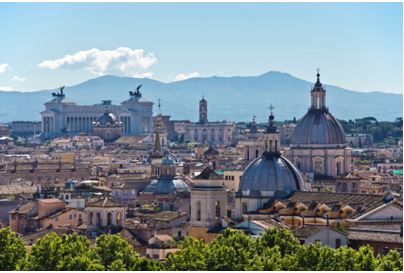The Genuine Progress Indicator (GPI) is an index of welfare, a complement to GDP. It is based upon the evaluation of economic, social and environmental factors that influence the quality of life, through the application of evaluation methods for non-market goods and services. The GPI derives from the Index of Sustainable Economic Welfare (ISEW) introduced by H.E. Daly e J.B. Cobb (1989). 
Novelties of this study
Our research presents some novelties. First of all, studying administrative sub-national and metropolitan areas is not so common in the international literature. In our case we present the Province of Rome – i.e. Rome Mertropolitan City (Roma Città Metropolitana). Furthermore, we introduced the evaluation of some components of welfare (items) not considered in previous ISEW calculation experiences in Italy. These are the value of the under-employment, the cost of illegal activities, the value of work performed by volunteers, and the value of leisure time dedicated to sport and social, cultural and open-air activities.
Results and observations
The results are rather interesting, and enable us to highlight some problems that generate a high impact on the level of people’s welfare.
The GPI is lower than GDP during the entire period under study (2001-2011); the gap between the two indexes is equal to the 25% of GDP, in average. This means that the economic, social and environmental components of welfare are not completely depicted by GDP.
From a socio-economic viewpoint, a substantial inequality in income distribution emerged; the corresponding Gini Index is in fact higher than the national and regional average. Moreover, the global economic crisis has been influencing the level of collective welfare, and, in particular, the increase in under-employment. Strong negative externalities in the transport system can be seen, such as the cost of commuting, road accidents, the cost of noise and air pollution, and the long term problems generated by greenhouse gas emissions.
Services from consumer durables, the increase in net capital, and the value of domestic work are the main “positive” factors for the level of welfare. It s interesting to notice that the value of the work of volunteers, based upon social capital and solidarity networks, has been constantly increasing, even during the years of crisis, in terms of estimated money and number of volunteers. The cost of illegal activities negatively affects the level of welfare. A deeper study is necessary to explore the problem and give a measure of it, beginning from the distinction between organized and non-organized crime. The former, also after recent events, seems rather diffuse and rooted, and its effects influence market dynamics and imply a decrease in welfare.
The analysis of GPI highlighted the need to preserve the natural environment, in particular forests, wet zones and croplands; through a systematic mapping of the administrative area, land use change, extraction of non renewable resources and the environmental impact of urbanization can be observed and monitored.
In sum
The Genuine Progress Indicator is very informative and, at the same time, it is a synthetic and agile communication tool. The GPI has also relevance at the sub-national level and can be a support for evaluating policies towards higher economic, social and environmental sustainability levels in the long run.
Extracted from the MS Degree Thesis in Environmental and Development Economics by Chiara Gasparoni, supervised by Profs. Carlo Zappia and Federico M. Pulselli (University of Siena).
